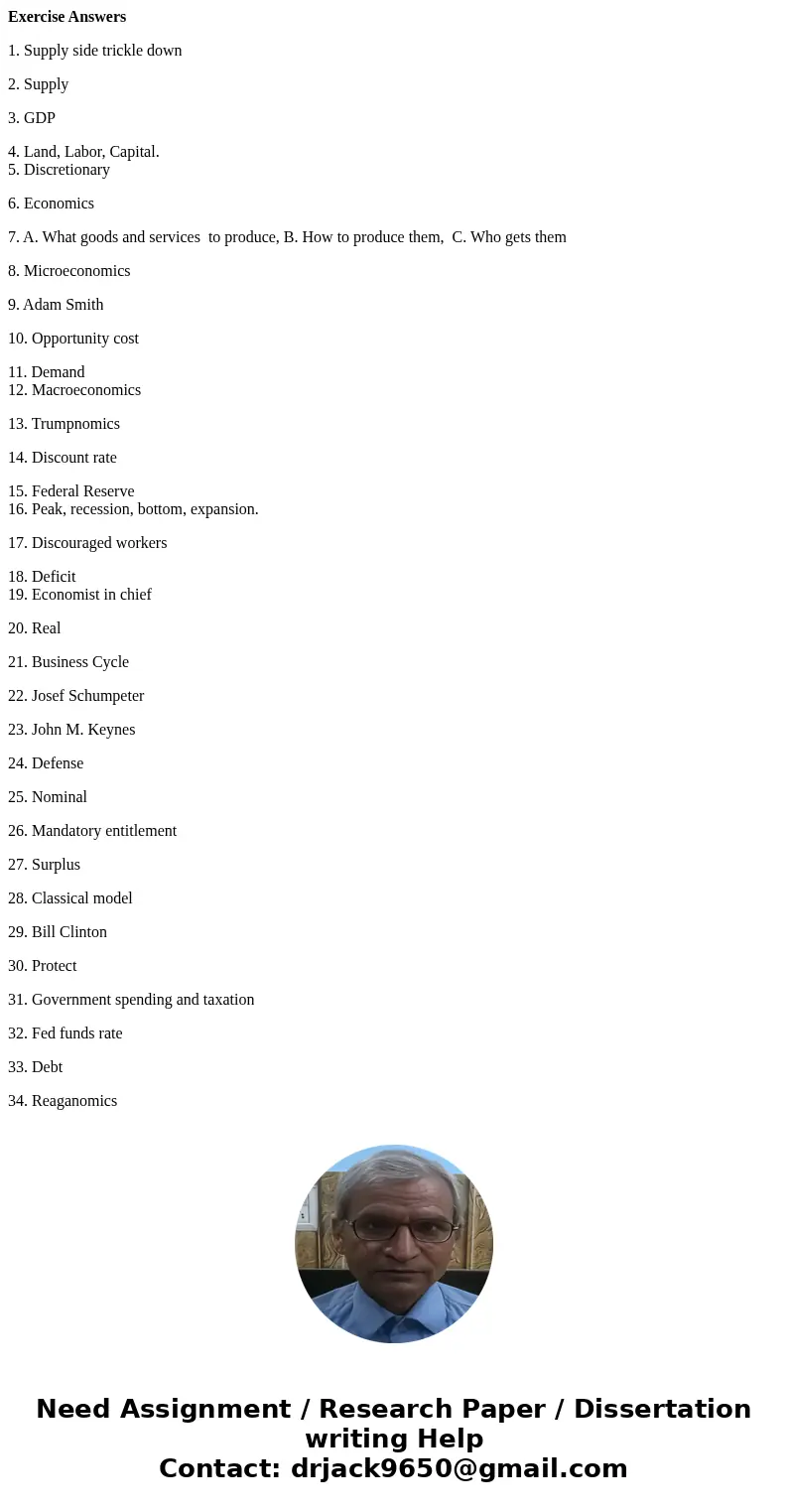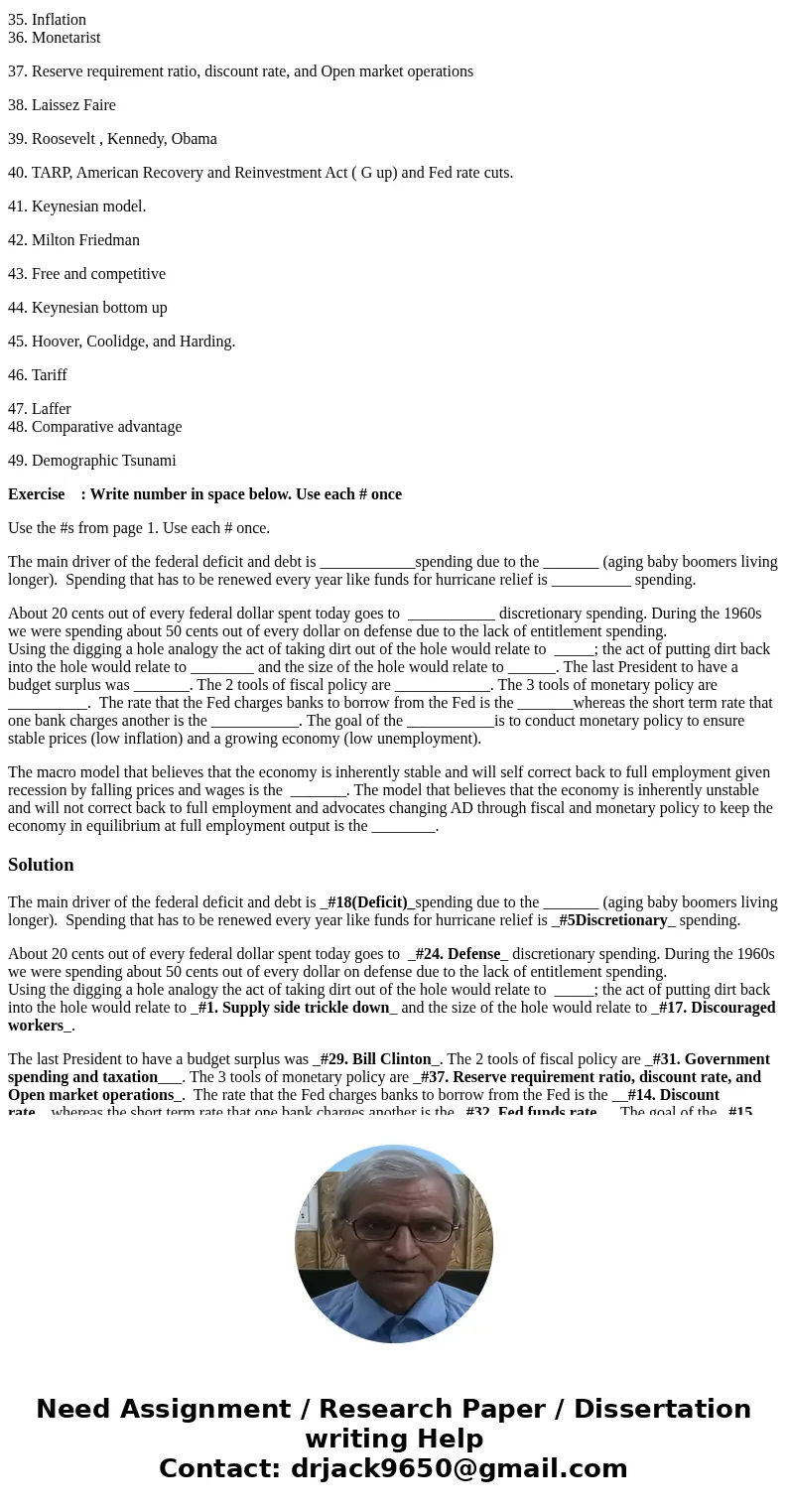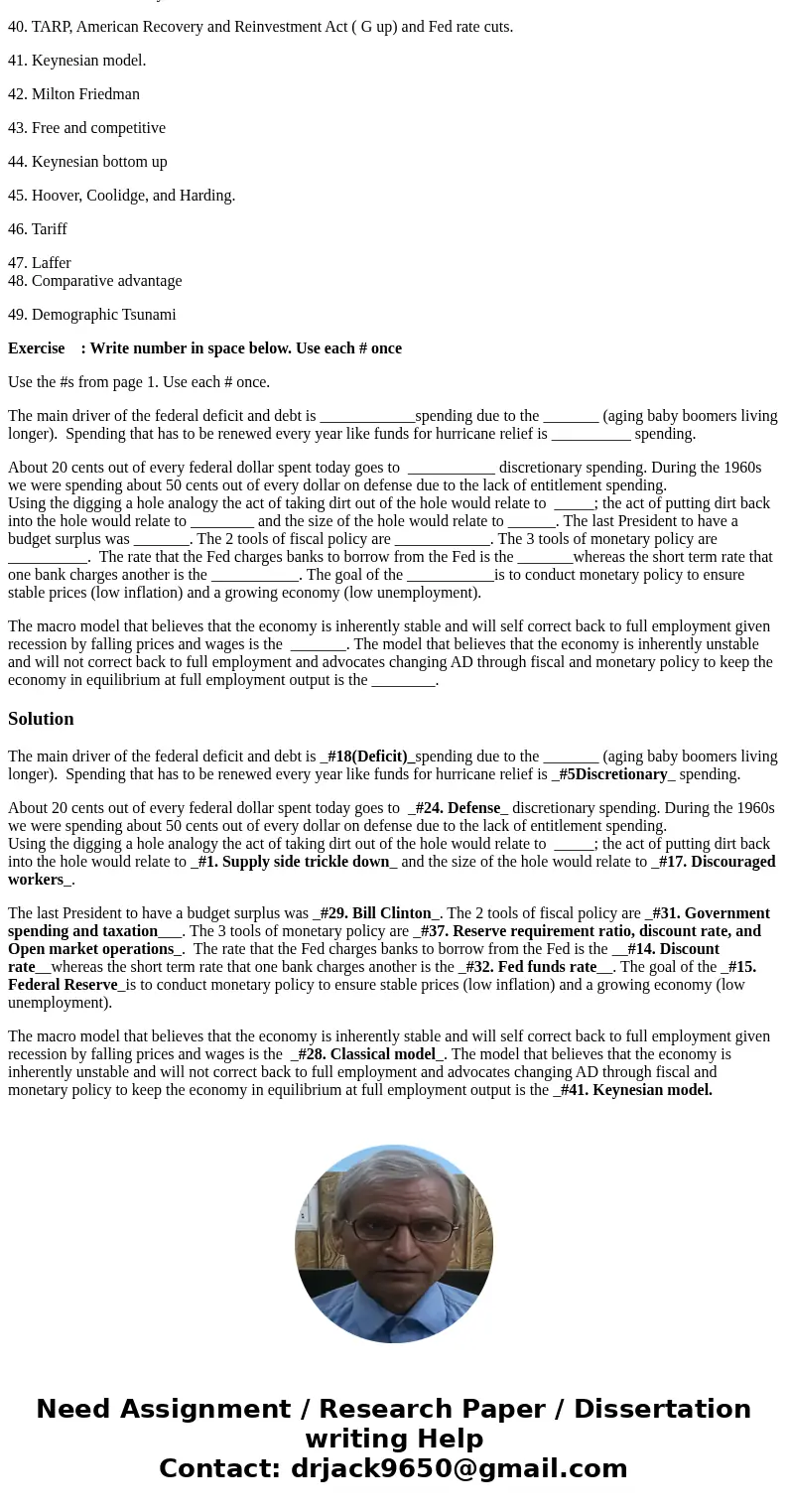Exercise Answers 1 Supply side trickle down 2 Supply 3 GDP 4
Exercise Answers
1. Supply side trickle down
2. Supply
3. GDP
4. Land, Labor, Capital.
5. Discretionary
6. Economics
7. A. What goods and services to produce, B. How to produce them, C. Who gets them
8. Microeconomics
9. Adam Smith
10. Opportunity cost
11. Demand
12. Macroeconomics
13. Trumpnomics
14. Discount rate
15. Federal Reserve
16. Peak, recession, bottom, expansion.
17. Discouraged workers
18. Deficit
19. Economist in chief
20. Real
21. Business Cycle
22. Josef Schumpeter
23. John M. Keynes
24. Defense
25. Nominal
26. Mandatory entitlement
27. Surplus
28. Classical model
29. Bill Clinton
30. Protect
31. Government spending and taxation
32. Fed funds rate
33. Debt
34. Reaganomics
35. Inflation
36. Monetarist
37. Reserve requirement ratio, discount rate, and Open market operations
38. Laissez Faire
39. Roosevelt , Kennedy, Obama
40. TARP, American Recovery and Reinvestment Act ( G up) and Fed rate cuts.
41. Keynesian model.
42. Milton Friedman
43. Free and competitive
44. Keynesian bottom up
45. Hoover, Coolidge, and Harding.
46. Tariff
47. Laffer
48. Comparative advantage
49. Demographic Tsunami
Exercise : Write number in space below. Use each # once
Use the #s from page 1. Use each # once.
The main driver of the federal deficit and debt is ____________spending due to the _______ (aging baby boomers living longer). Spending that has to be renewed every year like funds for hurricane relief is __________ spending.
About 20 cents out of every federal dollar spent today goes to ___________ discretionary spending. During the 1960s we were spending about 50 cents out of every dollar on defense due to the lack of entitlement spending.
Using the digging a hole analogy the act of taking dirt out of the hole would relate to _____; the act of putting dirt back into the hole would relate to ________ and the size of the hole would relate to ______. The last President to have a budget surplus was _______. The 2 tools of fiscal policy are ____________. The 3 tools of monetary policy are __________. The rate that the Fed charges banks to borrow from the Fed is the _______whereas the short term rate that one bank charges another is the ___________. The goal of the ___________is to conduct monetary policy to ensure stable prices (low inflation) and a growing economy (low unemployment).
The macro model that believes that the economy is inherently stable and will self correct back to full employment given recession by falling prices and wages is the _______. The model that believes that the economy is inherently unstable and will not correct back to full employment and advocates changing AD through fiscal and monetary policy to keep the economy in equilibrium at full employment output is the ________.
Solution
The main driver of the federal deficit and debt is _#18(Deficit)_spending due to the _______ (aging baby boomers living longer). Spending that has to be renewed every year like funds for hurricane relief is _#5Discretionary_ spending.
About 20 cents out of every federal dollar spent today goes to _#24. Defense_ discretionary spending. During the 1960s we were spending about 50 cents out of every dollar on defense due to the lack of entitlement spending.
Using the digging a hole analogy the act of taking dirt out of the hole would relate to _____; the act of putting dirt back into the hole would relate to _#1. Supply side trickle down_ and the size of the hole would relate to _#17. Discouraged workers_.
The last President to have a budget surplus was _#29. Bill Clinton_. The 2 tools of fiscal policy are _#31. Government spending and taxation___. The 3 tools of monetary policy are _#37. Reserve requirement ratio, discount rate, and Open market operations_. The rate that the Fed charges banks to borrow from the Fed is the __#14. Discount rate__whereas the short term rate that one bank charges another is the _#32. Fed funds rate__. The goal of the _#15. Federal Reserve_is to conduct monetary policy to ensure stable prices (low inflation) and a growing economy (low unemployment).
The macro model that believes that the economy is inherently stable and will self correct back to full employment given recession by falling prices and wages is the _#28. Classical model_. The model that believes that the economy is inherently unstable and will not correct back to full employment and advocates changing AD through fiscal and monetary policy to keep the economy in equilibrium at full employment output is the _#41. Keynesian model.



 Homework Sourse
Homework Sourse